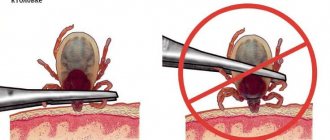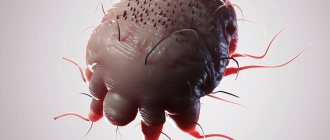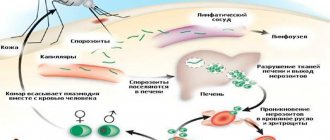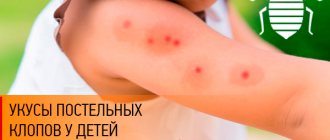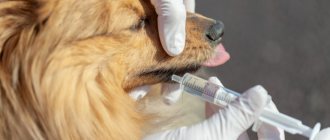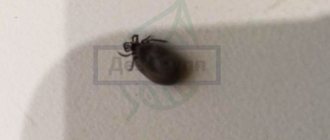It is a disease caused by the fly Wohlfahrtia magnifica.
.
It is one of the varieties of Myiases, that is, diseases caused by the development in the tissues of fly larvae that feed on dead and living tissues of the host. There are dozens of similar pathologies in the world, but in our area, wolfarthiosis is the most common
.
The disease was first described back in 1862. It is widespread throughout Central and Southern Europe, Russia, Central Asia, and China. The disease is particularly common in Italy and Hungary, and multiple cases have been reported in Morocco.
Female flies Wohlfahrtia magnifica have an excellent sense of smell and are able to find potential hosts by smell from many tens of kilometers away. It is worth noting that the insect never attacks completely healthy dogs - there must be signs of inflammation on the animal’s skin. Flies react especially
How do signs of maggots appear in dogs?
It is not difficult to notice maggots on a dog’s body - you just need to unroll the fur in certain places on the animal’s body. Sometimes, due to the thick fur, it is not possible to detect parasites right away, but the pet itself usually helps. Crawling, the larvae cause him a lot of anxiety, so a non-paralyzed dog will itch or try to lick the wound. Accordingly, the owner should pay increased attention to exactly the same area as the pet itself.
In advanced cases, deep holes appear on the body, formed by the larvae eating the flesh of a living creature. Taking a closer look at them, you will also probably notice worms, about 2-5 mm long.
Additional symptoms
By eating living flesh, fly larvae cause considerable discomfort to your pet, so it is not surprising that an infected dog becomes apathetic, lethargic and refuses food. Often, due to intoxication of the body, body temperature rises. If the pet does not refuse food, diarrhea may develop, although this symptom is quite rare.
Bodfly larvae on the pet’s body can also manifest themselves as a lack of coordination of the dog’s movements, coughing and shortness of breath, and if tubercles with a hole also form on the body, it is worth showing the animal to a veterinarian.
Important! Aspirin should not be used to reduce a dog's body temperature. This is poison for her, so it would be much wiser to choose analgin or “no-shpu” to relieve the symptom.
Methods for removing maggots
Selecting all the maggots by hand is quite difficult, especially if the dog has long and thick hair. It is much easier to treat a separate area of the body with special compounds that have a detrimental effect on the body of worms. The list of effective remedies, in this case, includes liquid tar and chlorhexidine. Both substances are safe for the animal and help quickly remove larvae from wounds.
Liquid tar
Natural liquid tar is an excellent helper in the fight against larvae on a dog’s body. Having discovered the area affected by them, the owner only needs to apply the product in a layer of 0.5 cm and lightly rub it into the skin. Of course, the smell of the dark oily liquid is pungent, but within a month it will completely destroy the accumulated maggots, so it’s worth being patient.
Treatment with chlorhexidine
An alternative to tar, which is no less effective at dealing with maggots, is pharmaceutical chlorhexidine. This watery solution without a distinct odor is used to treat many dermatological problems, acting as a disinfectant. You can apply it to your pet's skin using a cotton pad or simply pour it from the bottle in the right place. By performing the procedure 2-3 times a day, you can get rid of the larvae even faster than using tar, the main thing is to do the treatment regularly for several days.
Did you know? The oldest dog according to the Guinness Book of Records is a terrier mix named Max. He died in 2013, having lived more than 29.5 years and maintaining normal activity all this time.
DIY plastic bottle trap for horseflies
Any plastic drink bottle will work to create a trap. Using scissors, cut off the top of the plastic bottle so that the result is a long bottom part and a slightly shortened top part of the bottle.
The neck of the bottle should be turned over and inserted into the bottom of the bottle. For strength, both parts of the trap must be fastened together with a stapler or glue. Instead of a stapler and glue, you can use waterproof tape and electrical tape. When connected, both structures must fit snugly against each other.
To prepare the bait you will need water, sugar and fruit. Pour 50-60 g of sugar into a saucepan and add water until it covers the sugar. The resulting mixture is thoroughly mixed and brought to a boil. The pan is removed from the stove and mixed thoroughly, the resulting syrup is put in a cool place to cool.
The syrup must be carefully poured into the trap and small pieces of apple or peach added to it. You can use wine, honey and even pieces of meat as bait. The finished trap should be fixed at a height of no more than 1.5 m. The trap is good for catching almost all insects. To prevent beneficial insects from flocking to the bait, you can add a few tablespoons of vinegar to the bait. The smell of vinegar will repel bees.
It is important to remember that these traps are intended for single use. It is not recommended to remove horse flies and other insects from the bottle to free the trap
Once the trap is full, it should be disposed of and a new trap constructed.
You can increase the effectiveness of the trap by periodically warming the trap in your hands.
Popular
VASILY GENERALOV: “The driver for the development of medical technologies is two things: manufacturers of heavy medical equipment and manufacturers of pharmaceutical products. They dictate the research, they have the financial resources to then offer these programs to doctors. And, of course, this intervention is ideological - it slows down the development of real medicine.”
ROSTISLAV ISHCHENKO: “The delay in the construction of Nord Stream 2 gave Ukraine at least some negotiating position in trade regarding gas transit through it. That is, regarding the extension of the contract, the signing of a new contract, or the formalization of relations already on the terms of European standards, which Ukraine has assumed obligations, but for which it is not yet ready.”
EVGENY SATANOVSKY: “You can’t overthrow Assad in Syria, nothing will happen. The Saudis, the Emirates, and Qatar even understood this - everyone understood this, except for now the United States Congress. Which speaks especially well of democracy.”
Development cycle
The female flies up to the future “incubator” and literally injects the larvae into the affected area of the skin.
Each “injection” contains at least 10-15 individuals. The larvae quickly burrow into the wound, actively feed and molt twice. After about five days (depending on the ambient temperature), they crawl out of their cozy nest, fall onto the soil, burrow into it, and pupate. After one to three weeks, the imago (that is, the adult stage) emerges.
Interesting!
Adult flies are most active at an ambient temperature of 20-27 degrees Celsius. If it gets hotter, they find shade and fall into a kind of torpor.
General information about gadflies
Gadflies are parasites of farm animals. Individuals from the order Diptera that are capable of complete transformation. The eggs laid by the female form into a larva, then a pupa and an adult.
Parasites can be hairy and hairless, but the hairs can only be seen up close. The length of the gadflies is from 9 to 25 mm. The botfly larva can develop in the host for about 12 months.
Science knows and has studied 150 species of gadflies. The coloring of individuals may vary and differ depending on their habitat. This is explained by the fact that gadflies are often eaten by birds, and the parasites use their color to camouflage themselves from them.
All larvae of gadflies parasitize the body of mammals, most often ungulates. Gadfly larvae have a body without a head and legs, with 12 segments and belts of chitinous spines. The larva also has two motor openings, large posterior stigmata, and an oral part represented by oral hooks.
The parasite larvae go through two molts and three developmental stages. The larvae in the first two stages are very similar, which makes it practically impossible to distinguish them. In the third stage, the larva leaves the animal's body, turns into a pupa and lives in the ground.
Some types of gadflies are distributed almost throughout the world, for example, the bull gadfly.
Gadflies are divided into subcutaneous and gastric families.
Individuals of the subcutaneous family lay eggs for the formation and growth of larvae under the skin of animals. The female lays eggs on the animal's fur, then the larva burrows under its skin.
In large mammals, the larvae are most often located on the back; this place is not chosen by females by chance, but for the greatest likelihood of survival of the individuals, since here it is almost impossible to crush them.
What does a gadfly look like?
If the larva is on another part of the body, then it migrates up to the back. Sometimes migration occurs through internal organs, which slows down the process.
The nature of the reproduction of gadflies is interesting, since there is a certain period for their development, which helps to maintain an optimally large number of individuals. Even if the larvae enter the soil at different times, the earlier ones develop more slowly. Also surprising is their pupation, which occurs strictly between 7:30 and 8:30 am. The places where gadflies gather practically do not change, even if they are regularly driven away from there.
To lay eggs, the female chases the animal for a long time, which even often tries to escape. However, females are so persistent that they almost always achieve their plans. Animals escape from gadflies only in water.
The larva of the subcutaneous gadfly can also end up in the human body. These are rare cases, but occur, in particular, in people who are constantly in contact with farm animals.
The danger of the subcutaneous larva of the gadfly for humans is that, as in the body of an animal, it tries to move upward, getting into the brain. Sometimes a person may need surgery.
The most common of the subcutaneous gadflies are:
- bull gadfly;
- northern subcutaneous
The bull gadfly is the largest and is found in Europe, Asia and North Africa. The larvae burrow into cattle and undergo a complex migration through the animal's body.
Northern hypoderm is often found in deer. Often an animal becomes infected with a very large number of larvae at the same time. Their number can reach 1500 individuals.
Gastric botfly larvae develop throughout the animal's gastrointestinal tract. In order for the larvae to get inside, the female lays eggs closer to the oral cavity, near the nostrils, on the antennae of the animals. The larvae hatch from the eggs and enter the mouth themselves. Sometimes eggs are laid in a part of the animal's body that it can lick or scratch with its teeth.
Having attached themselves to the walls of the stomach or intestines, the larvae feed on mucus and blood. They emerge with feces and pupate in the ground.
The striking and most numerous representative of the gastric gadfly family is the hooked gadfly.
All gadflies are divided into two groups:
- the first - includes individuals with an underdeveloped oral part, which includes the main part of the parasites;
- second - individuals are characterized by the presence of a mouth opening, as well as a clear retractable proboscis without tentacles.
